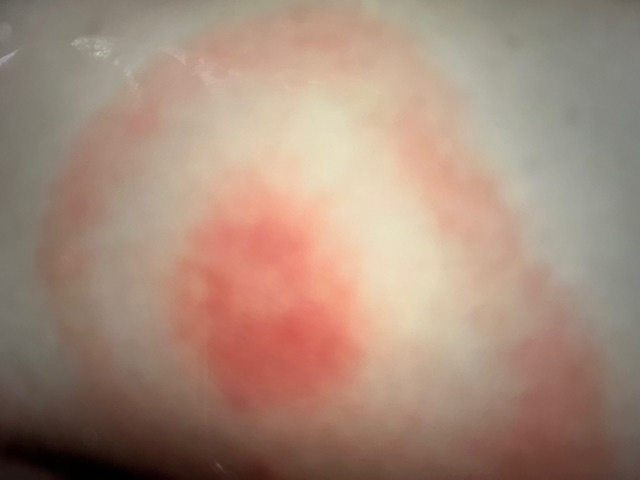
Ticks in Washington State: What You Need to Know and How to Protect Yourself
Ticks in Washington State: What You Need to Know and How to Protect Yourself
Ticks are a growing concern in Washington state, as they can be found in various regions across the state, especially in areas where deer reside. These tiny pests can carry dangerous diseases, such as Lyme disease, and pose a significant risk to humans, adolescents, and pets. Whether you’re an outdoor enthusiast or simply enjoy spending time in your backyard, it’s important to know where ticks are most commonly found and how to protect yourself from them.
In this blog post, we’ll discuss the tick hotspots in Washington state, how to repel them, and natural ways to stay safe during your outdoor adventures.
Where Are Ticks Found in Washington State?
Ticks are not confined to one specific part of Washington. They can be found throughout the state, but they are especially prevalent in areas where deer populations are high, as deer serve as the primary hosts for adult ticks. Some of the key locations where ticks are commonly found include:
- Kitsap Peninsula: This area, including towns like Poulsbo, Bremerton, Silverdale, and Bainbridge Island, has a high tick population due to its deer habitats.
- Pierce County
- Jefferson County
- Snohomish County
- Skagit County
- King County
- Southern Washington (around Longview)
Ticks are also found in more rural and forested areas, so outdoor activities like hiking, camping, and even gardening can expose you to potential tick encounters.
Understanding the Risks: Diseases Spread by Ticks
Ticks in Washington state can carry a range of diseases, the most common being Lyme disease. While not every tick is infected, it’s important to be cautious. Lyme disease can cause symptoms like Q fever, chills, joint pain, and fatigue, and in severe cases, it can lead to long-term health complications if not treated promptly.
Another disease to be aware of is Anaplasmosis, which can cause flu-like symptoms. The risk of these diseases makes it essential to take proper precautions when spending time outdoors.
How to Protect Yourself from Ticks
Preventing tick bites is the most effective way to protect yourself from tick-borne diseases. There are several methods you can use to keep ticks at bay:
1. Use Tick Repellents
One of the most common ways to repel ticks in Washington is by using chemical repellents like DEET or Permethrin. Both are effective at keeping ticks away, but they should be used with caution:
- DEET: Effective at repelling ticks, but it can be toxic if used frequently or in high concentrations, particularly for children or pets. It is not recommended for daily use.
- Permethrin: A pesticide that can be applied to clothing and gear. It’s effective for treating clothing and gear, but avoid applying it directly to your skin.
Although these chemical options are effective, they should be used sparingly, as overuse can be harmful, especially to the brain and nervous system.
2. Natural Tick Repellents
If you prefer a more natural approach, there are several essential oils known to repel ticks. Some of the most effective options include:
- Lemon Balm
- Eucalyptus
- Tea Tree Oil
- Cedarwood Oil
These oils can be applied to your skin or used in sprays. For maximum protection, douse your clothing well, as the scent of these oils can create an environment that is unappealing to ticks. By doing so, you essentially “smell like” essential oils, which ticks tend to avoid.
3. Wear Protective Clothing
When venturing into tick-prone areas, it’s essential to wear protective clothing. Consider the following tips:
- Wear long pants and sleeves to reduce the risk of ticks crawling onto your skin.
- Tuck your pants into your socks to create a barrier and prevent ticks from climbing up your legs.
- Wear light-colored clothing, which makes it easier to spot ticks.
In addition, consider treating your clothing with permethrin, which can be purchased in spray form or pre-treated clothing.
Tick-Proofing Your Yard
If you live in an area where ticks are prevalent, consider taking steps to make your yard less hospitable to them. Here are some suggestions:
- Keep grass short and trim any bushes or shrubs to reduce tick habitats.
- Create a barrier between wooded areas and your lawn using wood chips or gravel.
- Remove any leaf litter or debris from your yard where ticks may be hiding.
- Consider treating your yard with tick-repelling products, such as sprays or natural treatments like diatomaceous earth.
Seeking Expert Care for Lyme Disease in Washington State? Consult Dr. Susan Marra
Ticks are an important concern for anyone spending time outdoors in Washington state, but with the right precautions, you can reduce your risk of tick bites and the diseases they carry. Whether you’re using chemical repellents or essential oils, wearing protective clothing, or tick-proofing your yard, it’s essential to stay informed and take proactive steps to protect yourself.
If you’ve been bitten by a tick or are concerned about the risks of Lyme disease, it’s always a good idea to consult a specialist. Dr. Susan Marra, a leading Lyme disease expert in the Seattle area, is dedicated to providing accurate diagnoses and effective treatments for tick-borne illnesses. If you’re in Washington state and need guidance or treatment, contact us to learn more about or call to book an appointment.
Stay safe, take precautions, and enjoy all that Washington’s beautiful outdoor areas have to offer!
Disclaimer The information, including but not limited to, text, graphics, images and other material contained in these videos is for informational purposes only. It is not intended to be a substitute for professional medical advice, diagnosis, or treatment. Always seek the advice of your physician before undertaking a new healthcare regimen, and never disregard professional medical advice or delay in seeking it because of something you have seen, read, or heard in these videos.
Bullseye rash images


